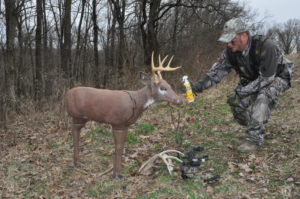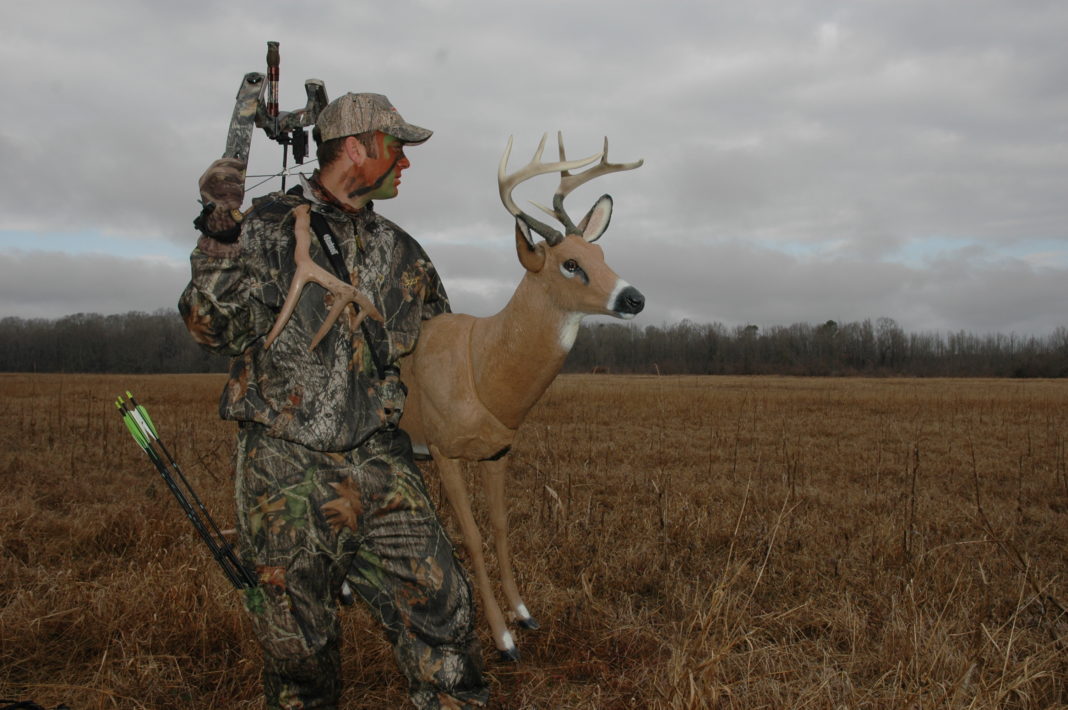Hunt bucks like ducks. That’s a concise sentence, yet once a whitetail deer sees a competitor, it relies less on its sense of smell and hearing. Decoying work on rutting bucks much like they do for wild turkeys and geese.
Doe vs Buck
One might think that a decoying doe will work better in the rut since bucks are on the prowl for estrous females. However, doe decoys often attract attention of real does, causing them to examine them and become wary. If a doe spots an immature buck, it usually avoids contact without an alarm sound.
Size Matters
 Use the size of antlers relative to the deer you are hunting. In mountainous areas where a basket 8-point is considered a trophy, use smaller antlers. In Iowa and the Mid-West, post a buck in the 120-class because dominant bucks grow much larger.
Use the size of antlers relative to the deer you are hunting. In mountainous areas where a basket 8-point is considered a trophy, use smaller antlers. In Iowa and the Mid-West, post a buck in the 120-class because dominant bucks grow much larger.
Shooting Prowess
Post you decoy on the edge of a field or other area where it can be seen from some distance. Once a roaming breeder has spotted your decoy, you will have a much easier time drawing your bow or raising your crossbow without being seen. 100 percent of that buck’s attention will be on the decoy.
Stay Ready
Stay alert. It’s not uncommon for a buck to come rushing into a decoy and some hunters have been left with their mouth open as a rutting buck trashes a decoy and then trots away.
This YouTube video by Melissa Bachman lays out the plan:



















![The Best Deer Camp Chili [VIDEO] Deer Chili Ingredients, Tomatoes, Chili Spices](/wp-content/uploads/2015/10/Deer-Chili-Deer-Camp-Recipe-218x150.jpg)
![How to Call Elk Early in the Season [VIDEO]](/wp-content/uploads/2016/08/byers003-218x150.jpg)




![Idiots Disturb Hunter: How Would You Have Handled It? [VIDEO]](/wp-content/uploads/2015/10/DSC00110-e1474487693878-100x70.jpg)
![Albino Buck Shocked to Shed His Antlers [VIDEO]](/wp-content/uploads/2015/10/AlbinoDeer-100x70.jpg)